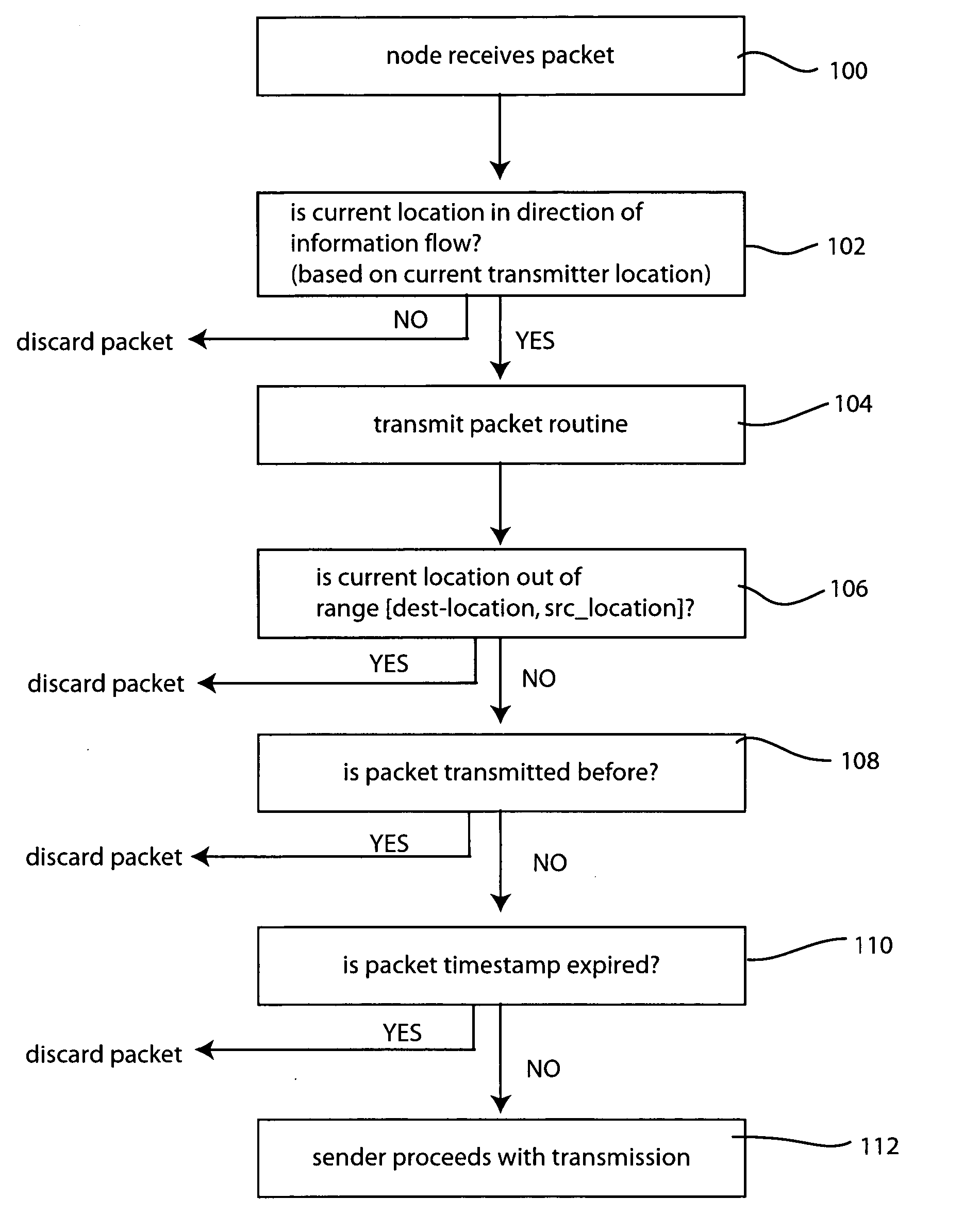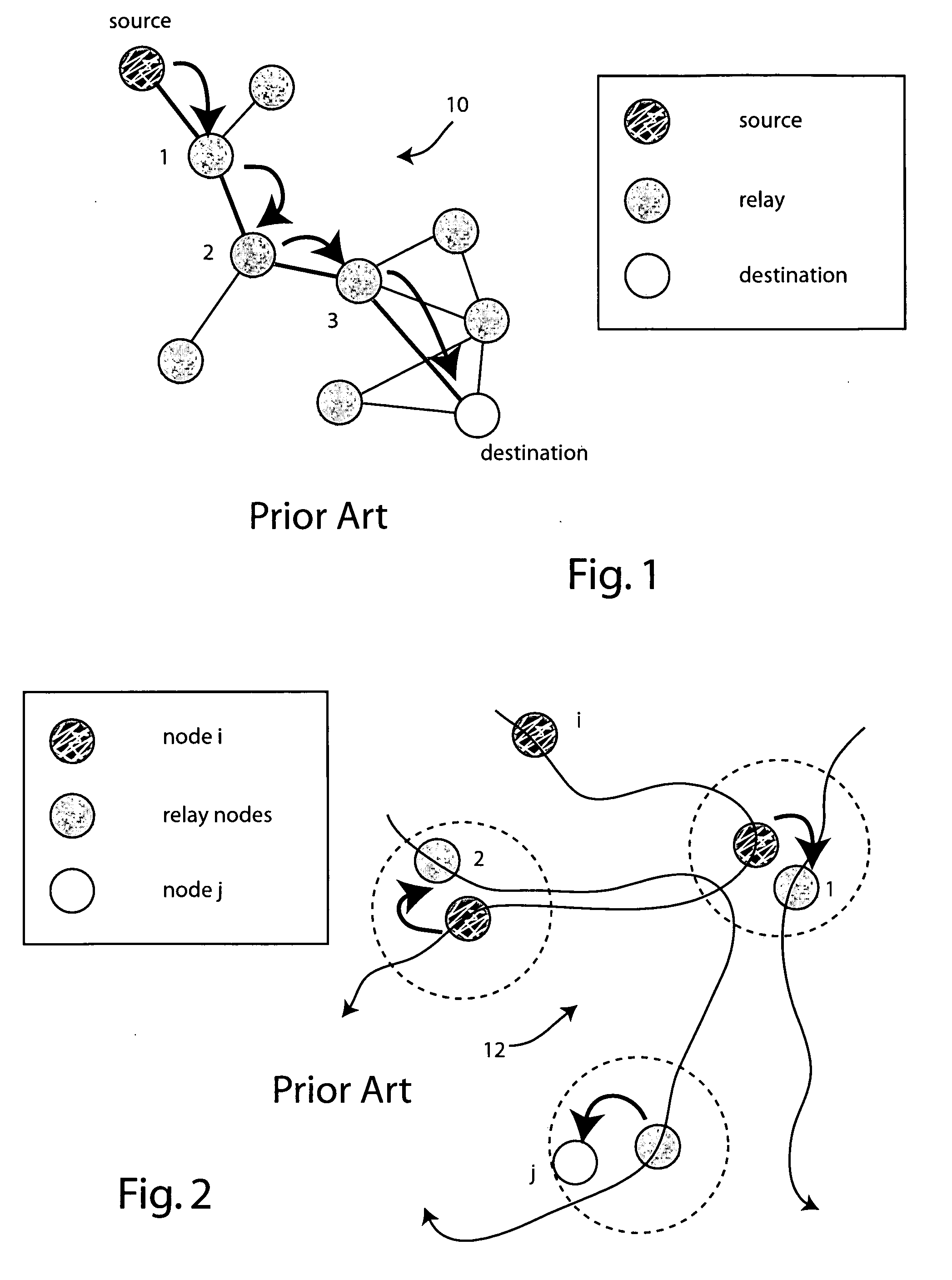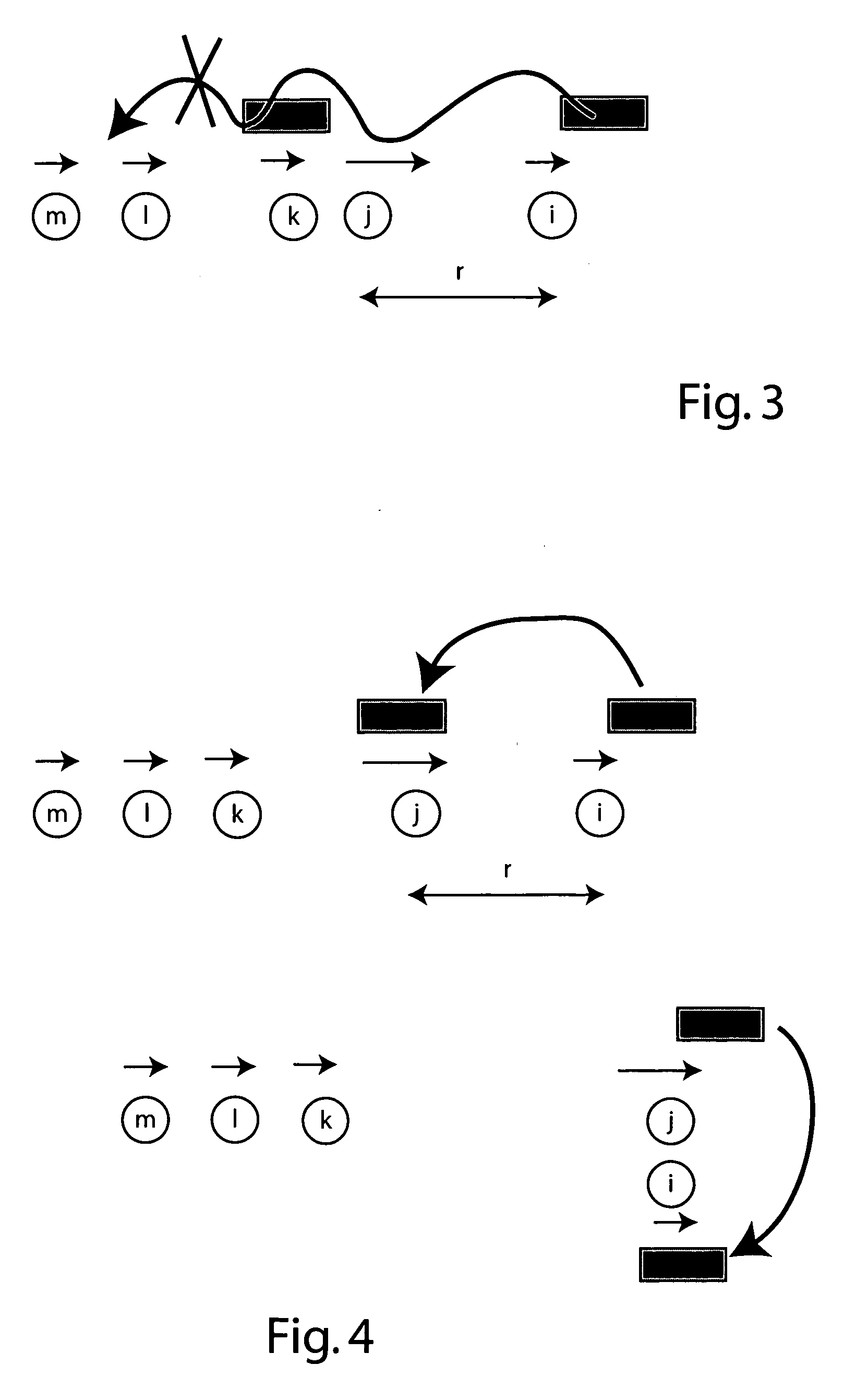Hybrid approach in design of networking strategies employing multi-hop and mobile infostation networks
a multi-hop and infostation network technology, applied in the direction of data switching networks, digital transmission, electrical equipment, etc., can solve the problems of sporadically broken communication between any two nodes, inability to scale up multi-hop networks, and unique problems of mobile networked systems
- Summary
- Abstract
- Description
- Claims
- Application Information
AI Technical Summary
Benefits of technology
Problems solved by technology
Method used
Image
Examples
Embodiment Construction
[0023] The following description of the preferred embodiment(s) is merely exemplary in nature and is in no way intended to limit the invention, its application, or uses.
[0024] In order to understand the principles of the invention, a review of some basic packet routing techniques will first be provided. Referring to FIG. 1, a mobile ad hoc network is illustrated generally at 10. The nodes in this network communicate with one another without the need to use an infrastructure such as access points or base stations. Nodes may act as a source, destination and / or router of packets. There are two basic types of mobile ad hoc networks, the multi-hop network and the mobile infostation network. FIG. 1 dictates a multi-hop network.
[0025] In the multi-hop network of FIG. 1 it is usually assumed that nodes have a transmit range such that the network is connected (no network partitioning) most of the time. Since nodes are spatially distributed over a large area, any two nodes may not be able t...
PUM
 Login to View More
Login to View More Abstract
Description
Claims
Application Information
 Login to View More
Login to View More - R&D
- Intellectual Property
- Life Sciences
- Materials
- Tech Scout
- Unparalleled Data Quality
- Higher Quality Content
- 60% Fewer Hallucinations
Browse by: Latest US Patents, China's latest patents, Technical Efficacy Thesaurus, Application Domain, Technology Topic, Popular Technical Reports.
© 2025 PatSnap. All rights reserved.Legal|Privacy policy|Modern Slavery Act Transparency Statement|Sitemap|About US| Contact US: help@patsnap.com



